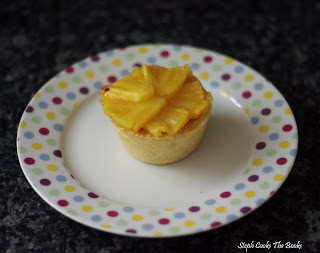These are, quite literally, a cocktail in a cupcake.
With the double whammy of confectionery and booze, it's great for - say - a hen party. More specifically, Ros' hen party. A great friend of mine and a lover of Margaritas.
She was a little overwhelmed by it all.
I created this recipe with Ros in mind. Margaritas are, traditionally, 50% Tequila, 29 % Triple Sec, and 21% Lime Juice. It's quite difficult to make a cake of which 50% is tequila, unless you're going for the trifle effect, so my sincere apologies to any Margarita pedants out there. ;)
So, to begin - with the candied lime slices.
Take three limes, slice them finely, and blanch them in a pan of simmering water for two minutes - no more, no less. Then heat a fresh cup of water and a cup of sugar, until the sugar has dissolved. Add the limes and keep the syrup at a gentle simmer for 15 minutes.
Pick out the limes with tongs and lay them on a sheet of greaseproof paper to dry. Do this *at least* half a day in advance.
SAVE THE SYRUP! We'll be using this later.
Prepare a 12-hole cupcake tin with cases. Preheat oven to 180 C / Gas 4.
Beat together 115g (4 oz) butter and 115g (4oz) of caster sugar until fluffy. Beat together two eggs, and incorporate, a little at a time. Beat in the zest and juice of one orange.
Sift in 115g (4 oz) of self raising flour, and 0.5 teaspoon of baking powder. Stir in until *just* evenly mixed. Stop mixing! Spoon the batter into the cake cases, filling about halfway up. Bake for 12 minutes (don't open the oven until 12 minutes has passed!), and then check them every minute, on the minute, until a cocktail stick poked into the centre comes out clean. Tip out of the tin straight away, and leave to cool on a wire rack.
While the cakes are starting to cool, put the sugar syrup from the candied limes into a small saucepan, and add 7 teaspoons of tequila. (This will make it to the ratio I've found to be just right - if you like your cakes boozier or less boozy, increase or reduce!) Warm it slowly (don't boil it). While it's warming, prick your still-warm cakes several times each with a fork. When the sugar mixture is hot, pour 2 teaspoons over each cake. Leave cakes to cool completely.
Now for the meringue frosting. Have a electric handwhisk on standby. Place four egg whites and 8 oz (240g) caster sugar in a large glass bowl, and place it above a saucepan of barely simmering water. You want the sugar to dissolve in the warm egg white, but the egg MUST NOT COOK. Stir constantly. When the sugar has dissolved, take the bowl off the heat, and whisk on a high setting for about ten minutes, until the mixture is cool and has puffed up beautifully. Whisk in 6 oz (170g) softened butter, the zest of 2 limes, and the juice of one lime. It will look like it's failing. Don't panic. Keep going, until your mixture is smooth.
Leave to settle for 15 minutes. Spoon over cupcakes.
Dip your candied limes, one by one, into a saucer of granulated sugar. Arrange on top of your cakes.
Happy hen party, darling Rosie.
(Here's hoping the wedding cake doesn't go tits up. xxxxx)





































